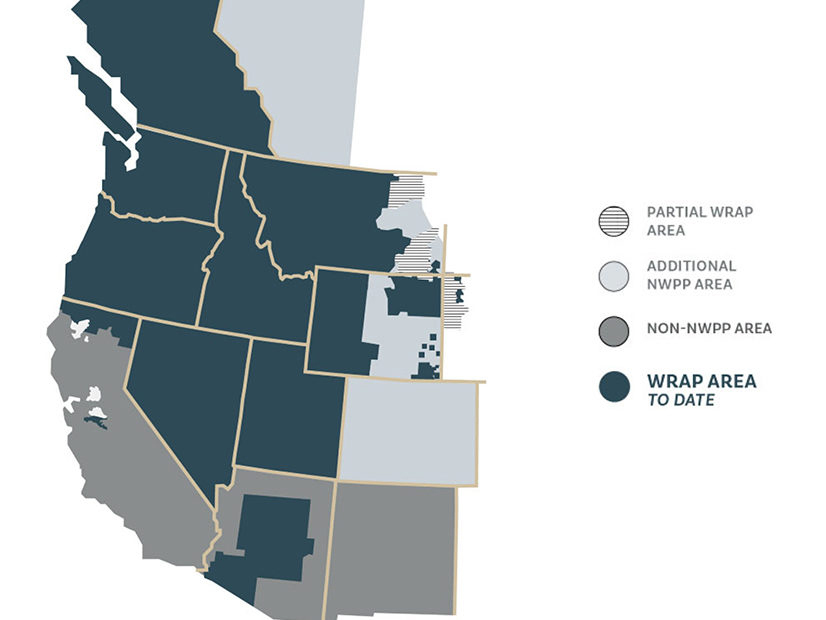
The Western Power Pool’s board on Tuesday approved a tariff to implement its Western Resource Adequacy Program, an initiative intended to ensure that participants across much of the Western Interconnection have sufficient capacity amid a changing resource mix.
WPP said it is planning to file the WRAP tariff with FERC by Aug. 31, followed by a 30-day comment period.
The program, which already has 26 participants in an area reaching from British Columbia to Arizona and east to South Dakota, is the “first region-wide reliability planning and compliance program in the history of the West,” WPP said in a news release Wednesday.
The tariff approval “is another major milestone leading us closer to making this first-of-its-kind program a reality,” WPP CEO Sarah Edmonds said in the news release. “Resource adequacy is an urgent and immediate challenge, especially in the West, and requires this type of regionwide approach to address it.”
Last week the WRAP’s Resource Adequacy Participant Committee (RAPC), consisting of a representative from each participant, also approved the draft tariff. The 74-page document lays out the program’s governance structure, including the roles of the RAPC, a Committee of State Representatives (COSR) and a Program Review Committee.
It describes in detail the program’s two main “time horizons,” a forward-showing program requiring participants to show they have sufficient capacity months in advance of summer and winter peaks, and an operational program, focused on the allocation of resources in real-time and day-ahead time frames.
And it addresses issues such as participation rates, financial penalties for resource deficiencies and failures to deliver, and dispute resolution.
Since 2020, WPP has been developing the WRAP, an initiative conceived to address concerns that Northwest utilities have been increasingly and unknowingly drawing on the same shrinking pool of reliability resources. But interest in the effort spread quickly to other areas of the West. In a move that signified its expanding reach across the Western Interconnection, the Northwest Power Pool rebranded itself as the Western Power Pool earlier this year.
The WPP is slated to launch a “nonbinding” iteration of the WRAP in the third quarter of this year and a binding phase with penalties sometime in 2024. Initially, the absence of enforcement and penalties will shield the program from FERC oversight, giving members additional time to iron out wrinkles and finalize its design.
WPP last year selected SPP to develop and operate the technical aspects of the WRAP, providing the market’s forward-showing functions, modeling and system analytics, and real-time operations.
Some in the West have speculated the WRAP could serve as a springboard for the eventual development of an RTO, one that would compete with CAISO’s stalled regionalization efforts and the ISO’s well-established Western Energy Imbalance Market. SPP has been using its new foothold in the West through the WRAP to build interest in its Markets+ program, a collection of services that stops short of a full RTO but could eventually develop into one. (See SPP Continues to Build on Markets+ Offering.)
Anticipating possible future requirements, WPP has already moved to restructure its governance and prepare to adopt some elements of an RTO, such as the appointment of an independent board of directors. WPP also established the COSR to ensure that utility regulators have a voice in discussions related to the WRAP.
The tariff appears to address the eventuality, saying: “Subject to the limitations and prohibitions imposed under Section 3.4 of this tariff, if the Board of Directors votes to file at FERC to expand the WRAP to include market optimization or transmission planning services, WPP will initiate a formal process with COSR and other stakeholders to conduct a full review of governance structures and procedures, including the role of states.”
‘Collaboration and Transparency’
The WPP published the WRAP draft tariff last month, inviting stakeholders to comment during a public webinar on July 25. Feedback from that session was incorporated into the updated draft that the board approved.
“Throughout this process we have remained committed to collaboration and transparency,” Edmonds said. “For three years, we have worked with regulators, participants and stakeholders to shape the program. We’ve listened to stakeholder voices, embraced their comments, and refined the program design and the tariff itself to get to a solution supported by all participants.”
FERC’s approval of the tariff would allow WPP to set rates and terms of participation and to make governance changes.
“WPP is hoping for a final order from FERC giving approval by the end of this year,” the group said in the news release. “The WRAP team also intends to confirm commitments from potential participants for the next phase of their participation by mid-December.”
WRAP Stage 1 participants include Arizona Public Service, Avangrid, Avista, Black Hills Energy, Basin Electric Power Cooperative, Bonneville Power Administration, Calpine, Chelan PUD, Clatskanie PUD, Douglas PUD, Eugene Water and Electric Board, Grant PUD, Idaho Power, NorthWestern Energy, NV Energy, PacifiCorp, Portland General Electric, Powerex, Puget Sound Energy, Seattle City Light, Snohomish PUD, Shell Energy, Salt River Project, Tacoma Power, Turlock Irrigation District and The Energy Authority, which is representing seven Washington and Oregon publicly owned utilities.


